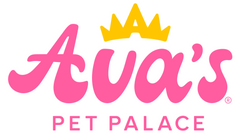Understanding the Differences Between Cat and Dog Diets: A Short Guide to Healthy Treats
As the founder of Ava's Pet Palace, where we create premium, organic treats for both cats and dogs, I’ve learned firsthand how different these two animals are, especially when it comes to their diets. Though both are beloved pets, their nutritional needs vary greatly. Understanding these differences can help pet owners ensure their furry friends stay healthy and happy. Let’s explore the key differences in the diets of cats and dogs and how treats play a role in their overall health.
Cats vs. Dogs: The Basics of Their Diets
Cats are obligate carnivores, which means they require nutrients that are only found in animal meat. Their bodies are designed to thrive on a diet rich in:
- High-Quality Protein: Essential for energy and maintaining lean muscle mass.
- Taurine: Vital for heart and eye health; cats cannot produce enough taurine on their own.
- Arachidonic Acid: A fatty acid important for skin health and reproduction.
- Vitamins A and D: Unlike some animals, cats cannot convert beta-carotene into vitamin A and need it preformed in their diet.
Because cats have a limited ability to digest carbohydrates, their diets should be low in grains and plant-based ingredients. This means they benefit most from treats that are high in animal proteins and free from unnecessary fillers.
Dogs, on the other hand, are omnivores. They can enjoy a more varied diet that includes both animal and plant-based ingredients. Their nutritional needs include:
- Protein: Important for muscle development and can come from both animal and plant sources.
- Fats: Provide energy and support skin and coat health.
- Carbohydrates: Dogs can digest grains and vegetables, which are good sources of energy.
- Fiber: Aids in digestion and maintains gut health.
Dogs can synthesize certain nutrients that cats cannot, making their dietary requirements more flexible. This allows for a wider variety of treats, including those with fruits and veggies
Treats: A Special Part of Their Diet
When it comes to treats, both cats and dogs enjoy the occasional snack, but it’s important to remember that treats should complement their main meals, not replace them.Cats often prefer treats that are high in protein and low in carbohydrates, staying true to their carnivorous nature. Dehydrated or freeze-dried meat treats are great options that align with their dietary needs and provide an extra boost of protein.
Dogs, with their more flexible diets, can enjoy a wider range of treats. While protein-based treats are still beneficial for dogs, they can also safely enjoy treats made from fruits, vegetables, and grains. It’s essential, however, to avoid treats that contain artificial additives, excessive fats, or sugar, as these can lead to health problems over time.
At Ava's Pet Palace, we believe in providing only the best, organic treats that support the health and well-being of both cats and dogs. By understanding the differences in their diets and offering them treats that meet their unique nutritional needs, you can help ensure that your pets not only enjoy snack time but thrive with every bite. After all, healthy pets are happy pets!
We're more than just a pet treat company; we're a community of pet lovers dedicated to the well-being of our furry friends. Thank you for letting us be a part of your pet's health journey. Stay tuned to our blog for more tips, and feel free to reach out—we love hearing from you!

